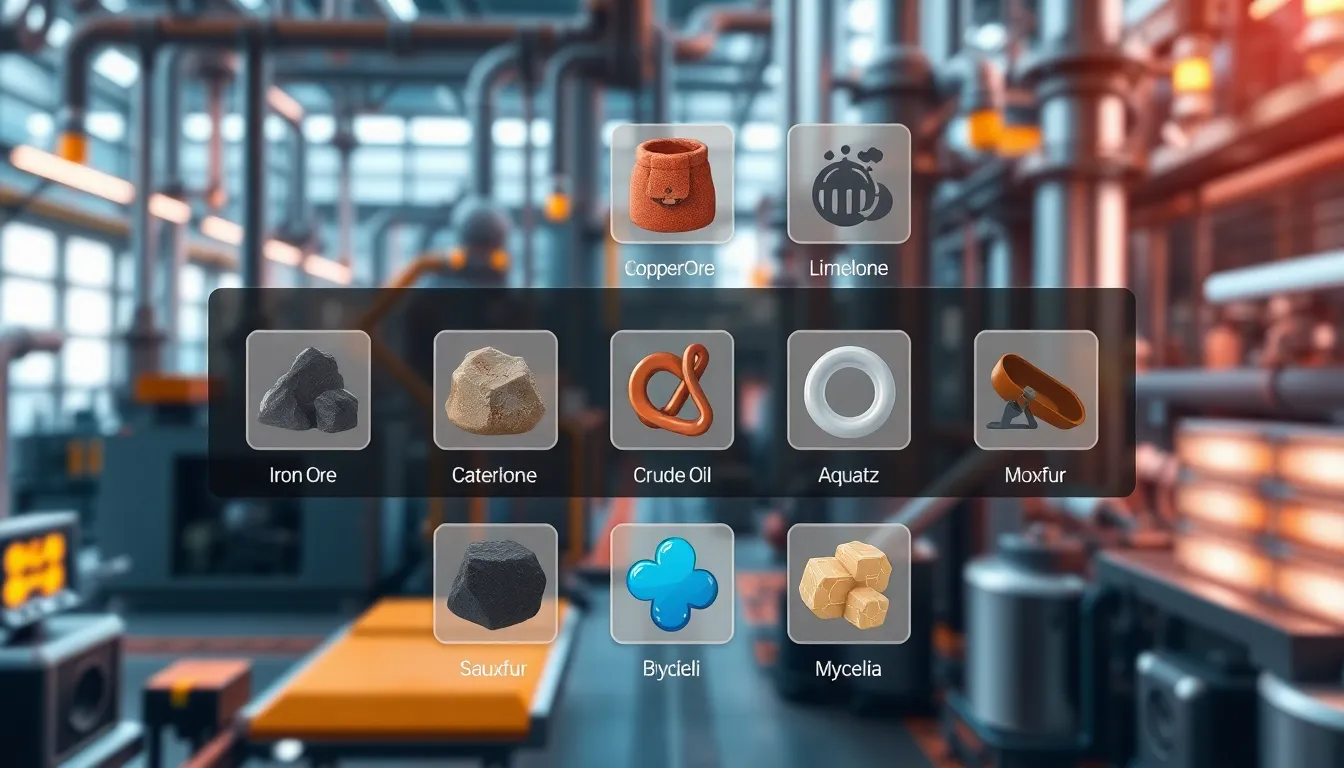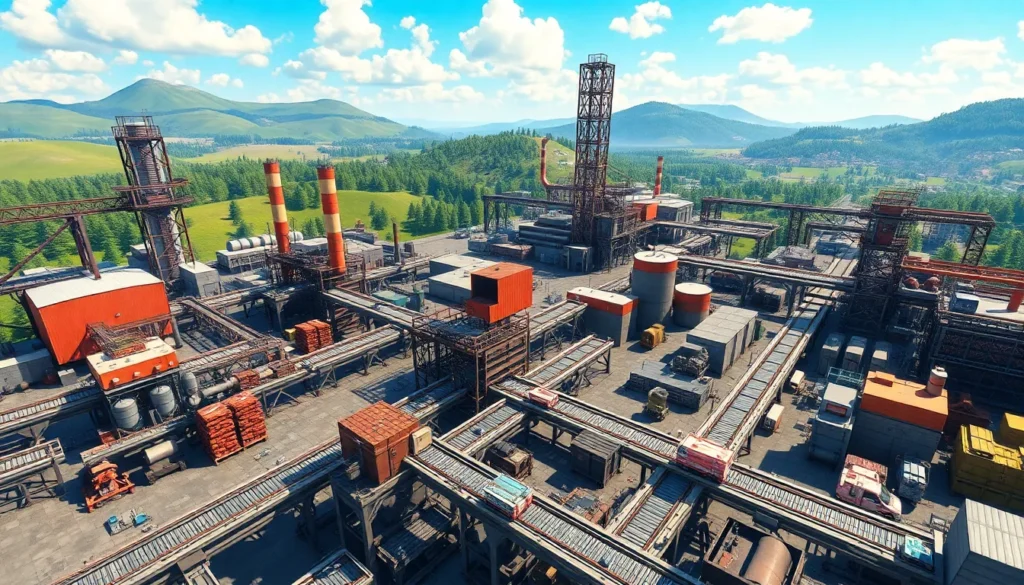Table of Contents
ToggleIn the vast world of Satisfactory, players constantly seek ways to optimize their factories and streamline production. With numerous alternate recipes available, it can be overwhelming to determine which ones truly enhance efficiency. That’s where the Satisfactory Alternate Recipe Tier List 1.0 comes into play, offering a comprehensive guide to help players navigate their choices.
This tier list ranks alternate recipes based on their effectiveness, resource requirements, and overall impact on gameplay. Whether a player is a seasoned engineer or just starting their factory-building journey, understanding these recipes can lead to smarter decisions and improved production lines. Dive into this tier list to discover which recipes deserve a spot in your factory and which ones might not be worth the effort.
Overview of Satisfactory Alternate Recipe Tier List 1.0
The Satisfactory Alternate Recipe Tier List 1.0 categorizes various recipes based on their efficiency, resource utilization, and production impact. Players evaluate these recipes to streamline factory output while conserving materials. The tier list ranks options from highest to lowest effectiveness, allowing for quick reference in decision-making processes.
Tiers Breakdown
- S Tier: Best Recipes
- These recipes yield the highest efficiency and output.
- Resource costs are balanced with significant production benefits.
- A Tier: Strong Recipes
- These recipes provide solid performance and benefits.
- They require moderately balanced resources with manageable trade-offs.
- B Tier: Average Recipes
- These recipes operate adequately but lack competitive advantages.
- Resource intake or production output might not always justify their use.
- C Tier: Below Average Recipes
- These recipes often demand high resources for minimal gains.
- They serve niche roles in production but are typically less favorable.
- D Tier: Least Effective Recipes
- These recipes feature the lowest output and efficiency.
- They usually require excessive resources without significant advantages.
The list serves both experienced players looking to optimize existing setups and newer players needing guidance on efficient production paths. Using this tier list, players can easily identify which alternate recipes align with their factory goals.
Key Ingredients and Their Importance

Key ingredients form the backbone of alternate recipes in Satisfactory, influencing efficiency and productivity. Understanding their role helps players optimize factory layouts and production lines.
Primary Ingredients
Primary ingredients are the fundamental resources required for crafting items. These ingredients primarily consist of:
- Iron Ore: Vital for producing iron plates and rods, iron ore defines early game development.
- Copper Ore: Essential for wiring and circuits, copper ore is crucial for technological advancement.
- Limestone: Used for creating concrete, limestone supports building structures and optimization.
- Coal: Serves as a primary fuel source for power and manufacturing, coal sustains energy needs.
- Caterium Ore: Opens pathways for advanced technologies and products, enhancing factory capabilities.
Selecting high-quality primary ingredients improves overall production efficiency, directly impacting the effectiveness of alternate recipes.
Secondary Ingredients
Secondary ingredients complement primary ones, often enhancing the output or enabling more complex recipes. Key secondary ingredients include:
- Crude Oil: Required for plastics and rubber, crude oil is necessary for advanced product lines.
- Sulfur: Used for creating explosives and ammunition, sulfur enhances combat and defense tactics.
- Quartz: Vital for producing silica, quartz supports advanced technologies and electronics.
- Bauxite: Produces aluminum, essential for advanced components and structures.
- Mycelia: Introduces opportunities for unique items, which assist in expanding production strategies.
Properly integrating secondary ingredients increases the versatility of factory operations and maximizes the benefits of alternate recipes.
Recipe Categories
The Satisfactory Alternate Recipe Tier List 1.0 organizes recipes into distinct categories based on their roles in production and crafting. Understanding these categories helps players maximize efficiency in factory operations.
Crafting Recipes
Crafting recipes focus on converting raw materials into products for various uses. These recipes typically involve basic components and feature straightforward production methods. Examples include crafting plates from Iron and wiring from Copper. Many crafting recipes fall within the S or A tiers for their optimal resource-to-output ratio, making them core components in factory setups. Players often prioritize these to ensure a steady supply of essential items.
Production Recipes
Production recipes represent the backbone of advanced production processes, transforming intermediate products into higher-end items. They usually require a mix of primary and secondary ingredients, such as assembling reinforced plates from Iron and Concrete. Production recipes are typically rated in tiers B or A, reflecting their balance of resource efficiency and output. Players benefit from implementing these recipes to scale factory operations and meet increased demand as the game progresses.
Fluid Recipes
Fluid recipes deal with processing liquids into useful products, integrating fluids into production chains. Examples include creating plastic from crude oil and producing lubricant. These recipes often demand careful planning, as the infrastructure requirements can be substantial, with ratings that vary between B and C tiers based on efficiency and output effectiveness. Proper management of fluid recipes is crucial for maintaining continuous production and preventing bottlenecks in factory workflows.
Tier List Evaluation Criteria
The evaluation of the recipes in the Satisfactory Alternate Recipe Tier List 1.0 hinges on several key criteria. This section details the aspects of effectiveness and resource efficiency that comprise the foundation of the tier rankings.
Effectiveness
Effectiveness measures the overall output and utility of each recipe. Recipes are assessed based on their ability to produce valuable items relative to input quantities. High effectiveness correlates with favorable production ratios and contributes to satisfying factory needs. S Tier recipes exemplify top-tier effectiveness, providing exceptional yield while maintaining manageable input requirements. On the contrary, D Tier recipes fail to justify their use, producing minimal output relative to the resources consumed.
Resource Efficiency
Resource efficiency is a critical factor in determining a recipe’s viability within factory setups. This metric evaluates the ratio of input materials to output results. Recipes that demand fewer resources to achieve comparable or superior outputs rank higher. For instance, A Tier recipes typically demonstrate good resource efficiency, striking a balance that allows for sustainable production. Conversely, recipes classified in the C and D Tiers often consume excessive resources without delivering significant gains, impacting overall factory performance. Properly evaluating resource efficiency leads to more informed decisions and optimized factory layouts.
Satisfactory Alternate Recipe Highlights
This section emphasizes key alternate recipes from the Satisfactory Alternate Recipe Tier List 1.0. The recipes are categorized into top-tier, mid-tier, and low-tier, each offering varying levels of efficiency and resource requirements.
Top-Tier Recipes
Top-tier recipes, classified as S and A tiers, exhibit outstanding efficiency and output. These recipes yield the best results for resource investment, significantly enhancing factory productivity. Examples include:
- Steel Production – Combining Iron Ingots and Coal, this recipe provides an excellent output of Steel, critical for advanced structures.
- Plastic Production – Utilizing Crude Oil, this recipe allows for high quantities of Plastic, essential for various technological advancements.
- Advanced Modular Frames – Made from Iron Plates, Screws, and Steel Beams, these frames support constructing complex structures while ensuring optimal resource use.
Mid-Tier Recipes
Mid-tier recipes, labeled as B and C tiers, offer manageable efficiency but often lack the competitive edge seen in top-tier recipes. They typically require balanced resources and can serve specific roles effectively. Examples include:
- Concrete Production – Utilizing Limestone, this recipe produces Concrete, important for foundational structures but may have alternatives with higher efficiency.
- Reinforced Iron Plates – Made from Iron Plates and Screws, while effective, the resource cost can make them less appealing compared to alternative methods.
- Fabric Production – Created from Cotton Plants, this recipe allows for varied product usage but doesn’t necessarily provide the best output.
Low-Tier Recipes
- Biomass Production – Combining leaves and wood, this recipe yields biomass but struggles compared to higher-tier energy sources.
- Aluminum Casing – Made from Bauxite and Copper, these casings require significant resource investment for minimal returns.
- Wire Production – While Copper Wire is vital, the efficiency remains low when compared to more advanced production methods, resulting in less overall utility.
The Satisfactory Alternate Recipe Tier List 1.0 equips players with essential insights to enhance their factory efficiency. By understanding the rankings and categories of alternate recipes, players can make informed choices that optimize production lines.
Whether a player is new to the game or a seasoned veteran looking to refine strategies, this tier list serves as a valuable reference. It streamlines the decision-making process, ensuring that resource utilization aligns with desired output.
By leveraging the information presented in this tier list, players can maximize their factory’s potential and enjoy a more satisfying gameplay experience.




